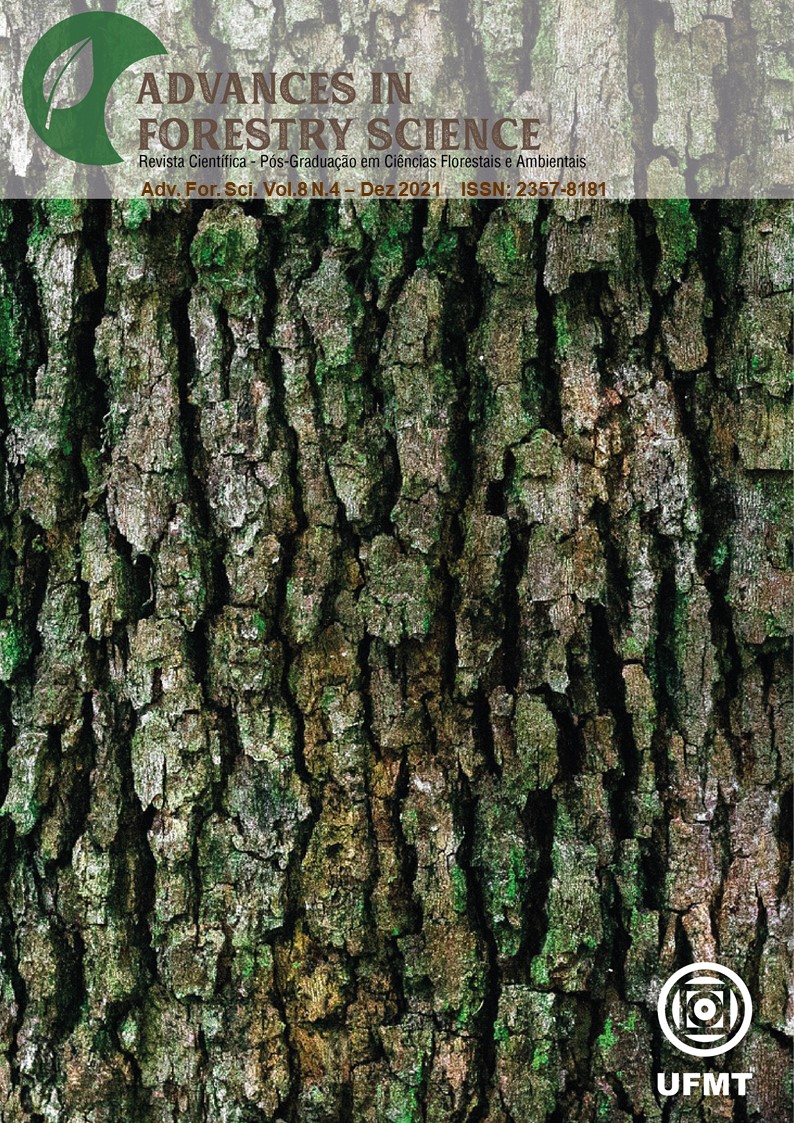Deterioração da madeira de Pityrocarpa moniliformis por macrofungos causadores de podridão branca
DOI:
https://doi.org/10.34062/afs.v8i4.12892Abstract
Woods, whether coniferous or hardwood, have their own natural resistance to the action of xylophagous microorganisms that interfere with physical, chemical and biological properties. The Caatinga is a biome rich in species diversity, however, they are not immune to the action of deteriorating agents. For this reason, this work aimed to evaluate the natural resistance of wood from Pityrocarpa moniliformis (Catanduva), a native species of the Caatinga, in order to analyze the attack caused by the fungi Ganoderma sp. and Daldinia sp., causing white rot. The specimens were submitted to a deterioration test in the laboratory, remaining in a cold room, type B.O.D, at a temperature of 28°C for 18 weeks after inoculation. The values of mass loss of wood from Catanduva after the test, for both fungi, were higher than those observed for wood from pine. However, it was below the average value of 10%, which classifies it as a wood with high resistance to white rot. Resistance may be related to the high density of the wood resulting from the slow growth of the species. After evaluating the solubility content in 1% NaOH, it is possible to observe the difference in the fungi's attack mechanism. The attack of Ganoderma sp. resulted in an increase in solubility that indicated the degradation of polysaccharides, while the attack of Daldinia sp. it did not affect the solubility content, probably because it initially attacked the lignin of the cell walls.
Downloads
Downloads
Published
Issue
Section
License
All copyright must be assigned to the Federal University of Mato Grosso.

